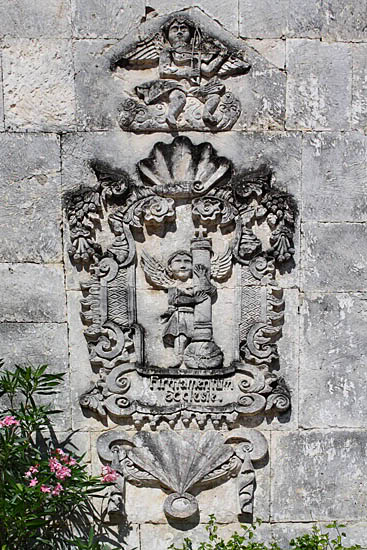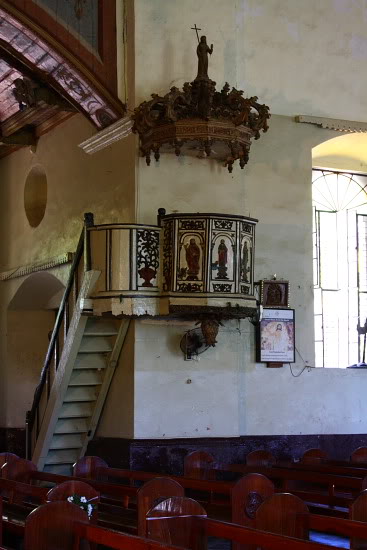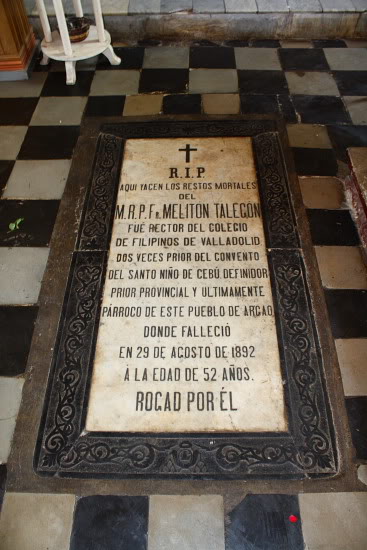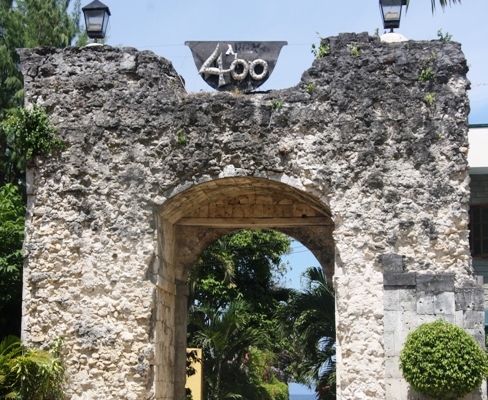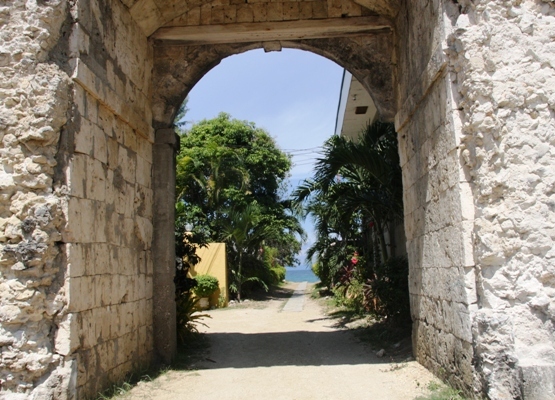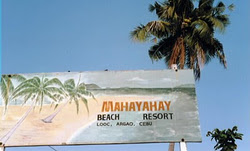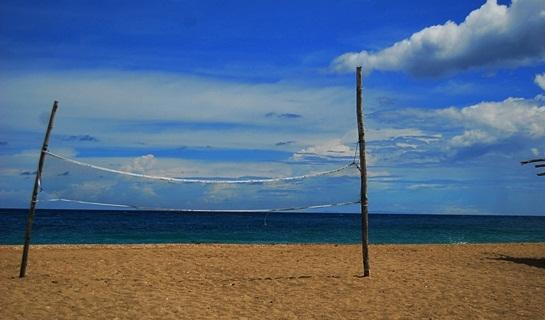Argao
Your one-stop site for everything about Argao: beaches, resorts, transportation, accommodation, crafts, arts, recreations, events, fiesta…
The municipality of Argao is located in the southeastern part of the province of Cebu and is approximately 67 kilometers from Cebu City. It is bounded by the following municipalities:
1. North: Sibonga
2. South: Dalaguete
3. West: Dumanjug, Alcantara, Ronda, Moal Boal, and Badian
4. East: Bohol Strait
|
Argao Information
Argao, Cebu, Philippines is located on the 2nd district province of Cebu. Composed of 45 barangays and now acknowledged as a first class municipality.
What is a barangay?
It is known to describe as a native Filipino term for village or district. Barangays are subdivided into smaller Zones or what they call as "Purok".
What is the population of Argao?
Argao is in the southern part of Cebu with a population of more or less than 62,000 people.
In one of the previous news articles, Argao was declared as the top tourist destination in Cebu. This is because of the increasing number of visitors who are interested to see the controversial place. With so much development in just a short period of time, lots of people get curious as to what Argao has to offer. Below is a list of things that you must experience when you visit the place namely:
Delicacy
The town is famous for its mouth-watering torta, lip-smacking tableya, and sweet tuba beverage. You must not forget to bring some when you return to your place because these make your stay complete.
Natural views
With so much scenic places to visit like Nature Park, beautiful beaches, and the “Only in the Philippines” Riverstone Castle – you will never feel bored even a single minute.
Available Amenities
Being away from home will not make you feel home sick because it has a WIFI connection open to the public. Just don’t forget to bring with you your laptop and enjoy unlimited Internet access for free.
The urban centers and highways of the municipality is largely composed of plains and flatlands while the central portion is mountainous and very steep. Among the places to see in Argao is the Mahayahay Beach and the municipality’s Chuch, the San Miguel Archangel Parish. This beautiful and richly furnished Rococo- Baroque church was constructed in 1734 and was completed in 1788.
The church was renovated for its bicentennial Celebration on 1988. Another must-see in Argao is the Riverstone Castle, which were constructed using stones collected from a nearby river. The castle has a mini-zoo that features monkeys, snakes, and other animals. These are just few of most sought-after things in Argao.
To have more of it, kindly drop by and experience them yourself.
Why named with Argao?
The name Argao dates back to the Spanish period. Locals claim that their hometown got its name from a tree called Sali-argaw, which are abundantly in the coastal areas of place during that time.
The town of Argao is considered as one of the oldest towns in the province of Cebu, having been founded by the Spaniards and established as a pueblo in the year1608. But prior to the arrival of the Spaniards, what was then Argao was composed of several families that lived mainly by fishing and farming, as many still do today.
According to stories passed on from generation to generation, the name of the town was derived from an abundantly-growing plant in the area, known locally as "Sali-argaw". The story of Argao’s name is very much like many other localities in the Philippines that derived their names from popular flora or fauna found in the area.
As the story goes, a delegation of Spanish officials came to the town and asked a villager, some say a fisherman, what the name of the town was. Obviously, not comprehending the foreign tongue, the man presumed that the Spaniard was referring to the “Sali-argaw” plants in the area, as the Spaniards were waving their arms to mean the entire place.
With this, the fisherman simply said “Sali-argaw”, and from that moment on the Spaniards christened the area as el pueblo de Argao. On that very same day, legends further say, many more Spaniards arrived to formalize the establishment of the pueblo and appointed Don Felipe Lucero as the town’s first gobernadorcillo.
Culture and Heritage
San Miguel el Arcángel
Facade of the church (Leftmost Picture)
|
San Miguel el Arcángel |
The Facade of the church
The church of St. Michael the Archangel in Argao was built in 1783 during the time of Fr. Francisco Espina who was the parish priest from 1782 to 1798. It bears a striking resemblance with the San Guillermo de Aquitania Church in Dalaguete.
Sporting influences of baroque and rococo, the church features a three-level facade that is divided into segments by pilasters. At the lower level is a paired pilaster each with a carved-relief of a cherub clinging to an ornamental plant on one hand while carrying another plant on the other hand.
The Details of the Facade
A framed representation of St. Michael the Archangel is carved in high-relief at the middle of the triangular pediment. At the lower level are carved relieves of ecclesiastical symbols and texts. Right above the main entrance is the Spanish royal seal, an indication that this church like many other churches in the country was built out of funds from the Spanish monarchy. Relieves of floral motifs and cherubim also decorate the facade, the side entrances and the perimeter wall of the church plaza.
An Unplayable Pipe Organ
The entire church complex, the municipal hall and the two-level coral stone building which is now a courthouse were once enclosed by a defensive wall of stone with bastions. Parts of the wall including the three portals still exist.
|
San Miguel el Arcángel |
|
The eastern portal that opens to the sea seems to have doubled as a watchtower since a small door beside it opens to a narrow passageway to the top. Just beside this portal is the mortuary chapel that was recently rediscovered after being hidden for years behind an out-patient department building of a nearby hospital. This contemporary structure was torn down recently thus finally exposing the stone chapel.
According to church historian Regalado Trota Jose, Argao Church is perhaps the only one in the country with capilla posas at the four corners of the church plaza which is enclosed with a low perimeter stone wall. These capilla posas were small chapels or shrines for stopover prayers during a procession and is common in Spanish colonial churches in Mexico.
Unfortunately, only one of the four is intact while the rest have fallen victim to the modernizing efforts of a particular parish priest. The low perimeter wall of the plaza itself is decorated with relieves of symbols representing the 14 stations of the cross.
|
San Miguel el Arcángel |
The Main Altar Retablo
The interior features a semi-cylindrical ceiling made up of planks of wood that is painted with various biblical scenes and ecclesiastical motifs. It is supported by corbels with decorative cherub heads. At the sanctuary is a large carved wooden altar screen or retablo while two smaller altar screens can be found on each transept.
The main altar retablo which no longer bears its original color after being painted with a motley of gold, silver, and gray colors a few years back still contains the original images that was intended for it unlike the side altars. In fact, the images at the main altar were also applied with gold leaf all over. The side altars however still bear its original colors including the painted floral embellishments and may give one a hint of how the large main altar retablo may have looked like.
|
San Miguel el Arcángel |
|
The Pulpit & Tomb of a parish priest
Right across the main altar, at the crossing, hangs a very large censer or thurible. At the northern transept is the tomb of Fr. Meliton Talegon, a parish priest of Argao in the late-nineteenth century who was once a rector of the Real Colegio delos Padres Agustinos Filipinos de Valladolid of the Augustinian Province of the Most Holy Name of Jesus of the Philippines which is based in Valladolid, Spain up to now.
Festival
"Pitlagong Festival 2009"
-Tribu Talaga-
Argao, Cebu
Pitlagong Festival in Argao
The Pitlagong Festival honors Argao's patron saint, Michael the Archangel. The festival is celebrated through a parade, a street dancing competition, and a ritual showdown.
The term pitlagong is a bamboo instrument used to clean the sugong. The sugong is a bamboo container used in collecting tuba, or coconut wine. Tuba is a traditional Filipino drink and it is believed that the tuba will not taste good without the pitlagong. Because of what the festival is named after, it is expected that locals will be drinking tuba during merrymaking in the festival.
Tourist Spots
Puerta Marina
|
Puerta Marina |
Puerta Marina |
Main entrance to the pueblo of Argao. Built in the mid-1700s, this served as the first line of defense of the pueblo. The Puerta Marina was constructed in the 1700’s to protect the town from possible looters. It serves as the main entrance from the sea to the charming town of Argao.
Mahayahay Beach Resort
|
Mahayahay Beach The image on the right, |
|
The Mahayahay Beach is a nice sand beach and is a well-known place for its beauty in whole Cebu. The resort is just in front of the famous Mahayahay Beach. And even at high tide there is an opportunity to swim in their cool swimming pool. A romantic and quiet place with clean and clear blue water as well as fresh air, that means Mahayahay Beach.
The Mahayahay Beach Resort exists since 1987. The Resort consists of three houses and offers accommodations for about 20 persons. The Mahayahay Beach is a nice sand beach and well known for its beauty in whole Cebu. During north monsoon season (October to May) there is long headland and the wind comes from north-east. The water at the south beach is very calm during that time. The rainy season/south monsoon (June to September) is a stormy time. Strong wind and big waves attract many people from all over the Philippines for wave surfing, windsurfing and especially skim boarding.
"Mahayahay Beach"
Argao, Cebu
Transportation
It is very easy to reach Argao. Aircon and non-aircon buses that leave for the town every hour are available at the Cebu South Bus Terminal. There are also mini-buses and vehicles-for-hire available within the terminal premises. Going around the town is also a breeze. Tricycles, trisikads (bicycles with sidecars), and motorcycles called "habal-habal" are all over the place. These vehicles take tourists and locals to different areas in the town.
![]() Getting There?
Getting There?
|
ROUTES |
MEAN S OF TRANSPORTATION |
Accessibility |
Fares* |
|
|
CSBT-South |
Buses (aircon) |
CSBT |
P155-P190 |
|
|
CSBT-South |
Buses(non-aircon) |
CSBT |
P120-P160 |
|
|
CSBT-South |
Mini Buses |
CSBT |
P100-P130 |
|
|
Argao |
"Habal-habal" Ride |
Vicinity of Argao |
P10-P50 |
|
|
*Fares vary depending on the destination point. |
||||
Falling in Love with a Town
“Suroy-suroy Argawanon!”

Map of Cebu showing the location of Municipality of Argao .
Barangays in the Municipality of Argao
Argao Municipality is administratively subdivided into 10 Barangays.
|
|||
|
|
|
|




